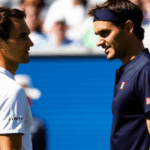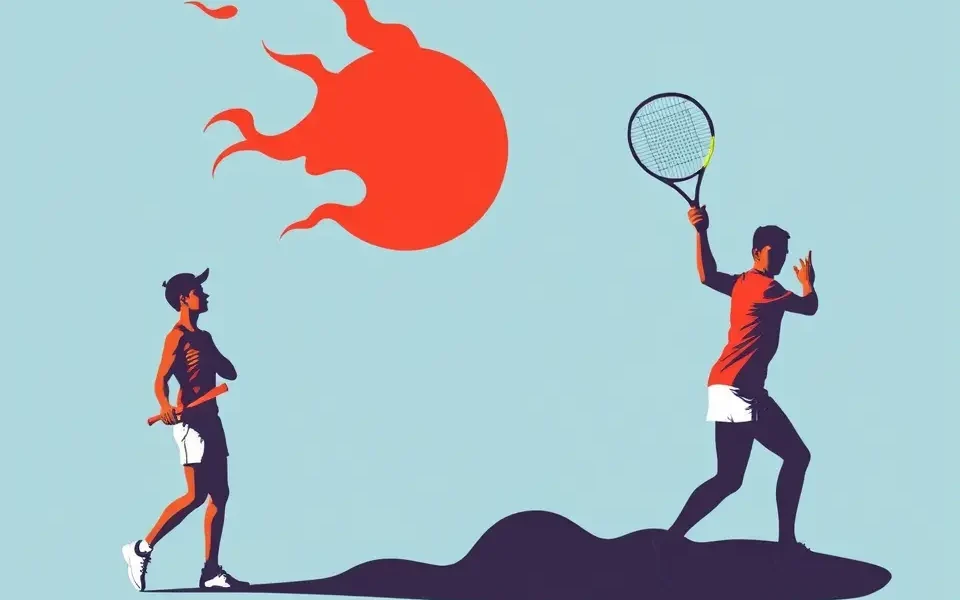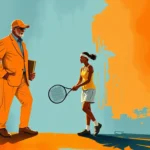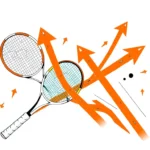The world of professional tennis is witnessing a fascinating shift. While Novak Djokovic, a name synonymous with unparalleled dominance, faces emerging challengers, Aryna Sabalenka is solidifying her position as a force to be reckoned with in the women’s circuit. This article delves into the current form of these players, analyzing their strengths, weaknesses, and potential future trajectories.
Sabalenka: A Class Apart
Aryna Sabalenka has been making significant waves in women’s tennis, consistently showcasing her impressive skills and racking up victories. Her powerful serves, precise volleys, and formidable groundstrokes have earned her the reputation as one of the top players in the game.
The Winning Formula
So, what exactly sets Sabalenka apart from her competition? Several factors contribute to her success:
- Mastering the Art of Serving: Sabalenka’s serve is a significant weapon. Her serves average over 100 mph, making it one of the fastest in the women’s game. This, combined with remarkable accuracy, allows her to dominate opponents and seize control of matches.
- Technical Adjustments: Sabalenka, alongside her coaches, identified a technical flaw in her serve motion through video analysis. Instead of attributing it to a mental block, they addressed it empirically, demonstrating how things were “off-kilter” and how they could be fixed.
- Taking Responsibility: Sabalenka took ownership of the situation and committed to working hard to correct her technical flaws. This proactive approach enabled her to regain confidence and return to a championship mindset.
- Aggressive Baseline Play: Sabalenka’s game revolves around calculated aggression. Her ability to construct points strategically, combined with her raw power, makes her a dangerous opponent on any surface.
- Mental Fortitude: Sabalenka’s improved mental resilience has transformed her into a more balanced player. She exhibits fiery emotion and expressive energy on the court, creating an engaging spectacle for fans.
- Consistency and Improvement: Sabalenka has demonstrated consistency and continuous improvement, making her a formidable contender in major events. Her evolution stands out, as she appears more prepared than ever to lead on the circuit.
- Adaptability: Sabalenka has shown an ability to adapt to different conditions, as evidenced by her strong performances in both Indian Wells and Miami.
Miami Open 2025: Aiming for Redemption
At the Miami Open 2025, Sabalenka is determined to redeem herself, having learned from past experiences. She recognizes the importance of maintaining focus and avoiding complacency until she lifts the trophy. Her head-to-head record against Jessica Pegula stands at 6-2, with Pegula’s two victories occurring on hard courts. Sabalenka understands the need to maintain a high first-serve percentage (above 60%) and avoid letting her opponent dictate the match.
Potential Challenges
While Sabalenka reigns with an “iron fist,” she remains aware of the numerous players vying to challenge her dominance. Emerging stars like Mirra Andreeva add intrigue to the competition.
Zverev: The Man to Beat Djokovic?
Alexander Zverev has emerged as a potential threat to Novak Djokovic’s reign. While Djokovic has historically held the upper hand in their head-to-head encounters, Zverev’s recent form suggests a shift in the dynamic.
Head-to-Head Analysis
Novak Djokovic and Alexander Zverev have played 26 games since 2017. Djokovic leads with 8 wins (61.5%) to Zverev’s 5 (38.5%). However, recent results indicate Zverev’s improvement. In their last five matches, Zverev has won 3.
Zverev’s Strengths
Several factors contribute to Zverev’s rise as a top contender:
- Aggressive Baseliner: Like Djokovic, Zverev is an aggressive baseliner with a strong backhand.
- Adaptable Game: Zverev possesses a game suitable for all court surfaces.
- Improved Performance: Zverev has shown tremendous results, although replicating that at the senior level has been challenging.
Djokovic’s Diminishing Returns?
While still a formidable opponent, Novak Djokovic has shown slight signs of vulnerability:
- Slight Dip in Return Game: Djokovic’s return game has seen a minor decline since the beginning of 2024. His first-serve return points won percentage has dropped from 33.7% (career) to 32.5% (last 52 weeks).
- Breakpoint Conversion: Djokovic’s breakpoint conversion rate has also decreased, from 44.1% (career) to 41.5% (last 52 weeks).
- Struggles Against Taller Players: Djokovic has struggled against taller players with big serves.
- Focus on Majors: Djokovic has adjusted his schedule to prioritize major tournaments, potentially leading to less match play and a slight dip in his overall level.
Djokovic’s Legacy
Despite these potential vulnerabilities, Novak Djokovic remains an icon of the sport. His accomplishments are staggering:
- Record-Breaking Achievements: Djokovic holds the record for most weeks as world No. 1 (428) and most year-end No. 1 finishes (8).
- Grand Slam Dominance: Djokovic has won a record 24 major men’s singles titles, including a record ten Australian Open titles.
- Triple Career Grand Slam: Djokovic is the only man to achieve a triple Career Grand Slam.
- Career Golden Masters: Djokovic is the only player to complete a Career Golden Masters twice.
A Shifting Landscape
The tennis world is in constant evolution. While Novak Djokovic’s legacy remains secure, Alexander Zverev’s recent form positions him as a serious contender. Meanwhile, Aryna Sabalenka’s dominance in the women’s game establishes her as a force to be reckoned with. As these players continue their journeys, the tennis world eagerly anticipates the unfolding of future rivalries and the crowning of new champions. The dynamic interplay between established legends and rising stars promises an exciting era for the sport.








No Comment! Be the first one.